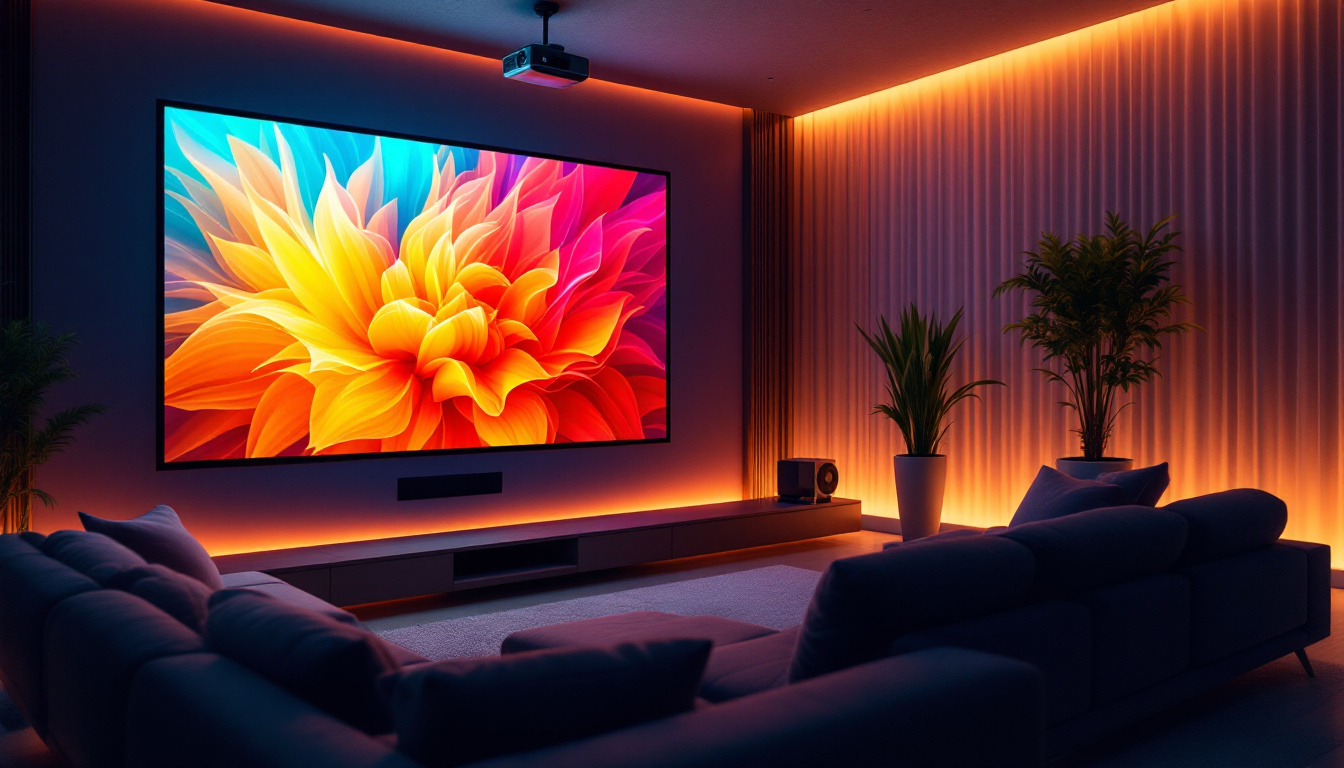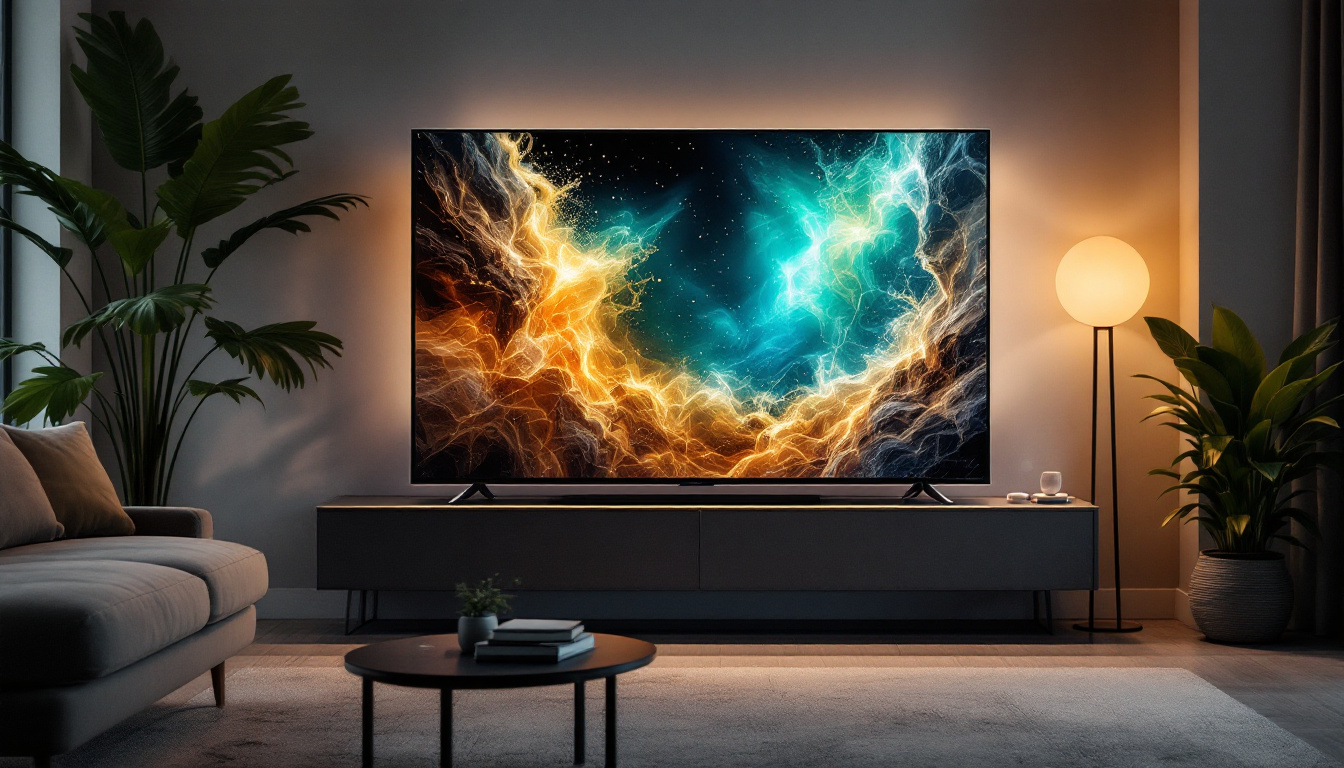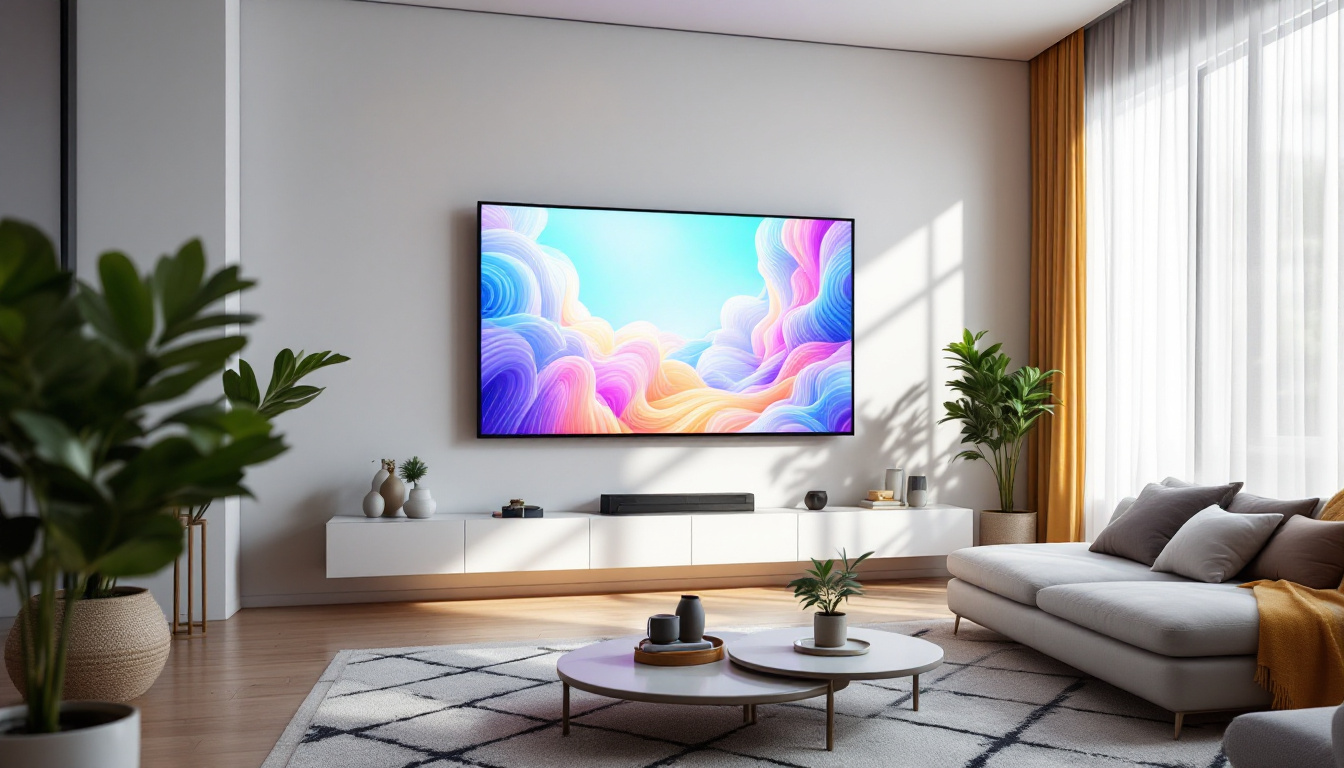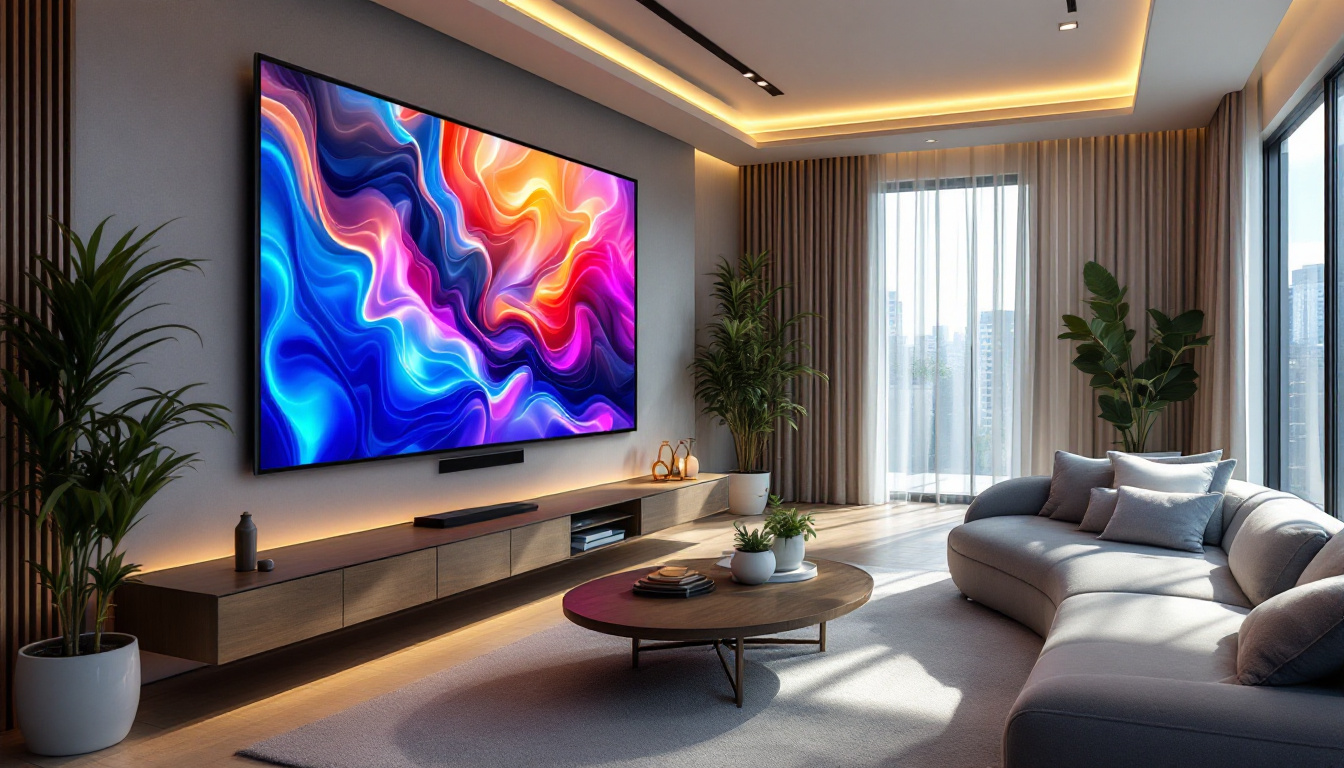Color LCD Display: LED Display Explained
In the world of modern technology, displays play a pivotal role in how information is conveyed and consumed. Among the various types of screens available today, Color LCD (Liquid Crystal Display) and LED (Light Emitting Diode) displays stand out for their clarity, vibrancy, and versatility. This article delves into the intricacies of these display technologies, exploring their functions, advantages, and applications.
Understanding Color LCD Displays
Color LCD displays are a popular choice for a wide range of devices, from smartphones to televisions. They utilize liquid crystals to modulate light, creating images that are both sharp and colorful. The fundamental operation of an LCD involves the manipulation of light and color, making it essential to understand how these components work together.
The Basics of LCD Technology
At its core, an LCD consists of several layers, including a backlight, polarizers, and liquid crystal cells. The backlight, typically made of fluorescent or LED lights, provides the necessary illumination. The polarizers filter this light, allowing only certain wavelengths to pass through. The liquid crystals then twist and align in response to electric currents, controlling the amount of light that reaches the viewer’s eyes.
This intricate process enables LCDs to produce vibrant colors and sharp images. The combination of red, green, and blue (RGB) subpixels in each pixel allows for a broad spectrum of colors, making LCDs suitable for various applications, from gaming to graphic design. Furthermore, advancements in technology have led to the development of high-definition (HD) and ultra-high-definition (UHD) LCDs, which offer even greater resolution and clarity, enhancing the viewing experience for users.
Advantages of Color LCD Displays
Color LCD displays offer several advantages that contribute to their widespread use. One of the most significant benefits is their energy efficiency. Compared to older technologies like CRT (Cathode Ray Tube) displays, LCDs consume less power, making them more environmentally friendly.
Additionally, LCDs are thinner and lighter than their predecessors, allowing for sleek designs in modern devices. Their ability to maintain image quality at various angles, known as wide viewing angles, further enhances their usability, especially in collaborative settings where multiple viewers may be present. Moreover, the durability of LCD screens, which are less prone to burn-in compared to OLED displays, makes them a reliable choice for long-term use in both consumer electronics and professional settings. This resilience, combined with their affordability and adaptability to different environments, solidifies the position of color LCD displays as a cornerstone of modern visual technology.
Exploring LED Displays
LED displays are often confused with LCDs, but they represent a different technology. While both types of displays utilize liquid crystals, LED displays employ LEDs as their primary light source instead of traditional fluorescent lights. This distinction leads to several unique characteristics and benefits.
How LED Displays Work
LED displays operate by using an array of tiny light-emitting diodes to produce images. These diodes can be arranged in various configurations, including full-color RGB matrices or monochrome setups. When an electric current passes through the diodes, they emit light, which is then modulated to create images.
There are two main types of LED displays: direct-lit and edge-lit. Direct-lit LED displays have LEDs placed directly behind the screen, providing uniform brightness across the entire display. In contrast, edge-lit displays have LEDs positioned along the edges, with light being guided across the screen. This difference affects the overall brightness and contrast of the images produced.
Benefits of LED Technology
One of the most notable advantages of LED displays is their superior brightness and contrast levels. The ability to produce deeper blacks and brighter whites enhances the overall viewing experience, making LED displays ideal for high-definition content and gaming. Furthermore, LED technology offers improved energy efficiency, often consuming less power than traditional LCDs.
LED displays are also known for their longevity. The lifespan of LEDs can extend beyond 50,000 hours, significantly reducing the need for replacements and maintenance. This durability makes them an excellent choice for both commercial and residential applications.
In addition to their impressive lifespan, LED displays are also less prone to screen burn-in, a common issue with older display technologies. This resilience allows users to display static images for extended periods without the worry of permanent damage. Moreover, the rapid response time of LEDs contributes to smoother motion rendering, which is particularly beneficial for fast-paced video content, such as sports and action films.
Another significant advantage of LED displays is their versatility in design. They can be manufactured in various shapes and sizes, allowing for creative installations in both indoor and outdoor settings. From large-scale billboards to sleek, wall-mounted televisions, LED technology can adapt to different environments and aesthetic preferences. This flexibility has made them increasingly popular in retail spaces, entertainment venues, and even art installations, where visual impact is paramount.
Comparing Color LCD and LED Displays
While both Color LCD and LED displays have their unique strengths, understanding the differences between them can help consumers make informed decisions. The choice between the two often depends on specific needs and preferences.
Image Quality and Performance
When it comes to image quality, LED displays generally outperform traditional LCDs. The enhanced brightness and contrast ratios of LED technology allow for more vibrant colors and sharper images, particularly in well-lit environments. However, advancements in LCD technology, such as IPS (In-Plane Switching) panels, have significantly improved their performance, narrowing the gap between the two.
Moreover, the color accuracy of both display types can vary based on the specific model and manufacturer. High-end LCDs can achieve impressive color reproduction, making them suitable for professional use, while budget models may fall short in this area. Additionally, LED displays often incorporate technologies like local dimming, which further enhances contrast by adjusting brightness in specific areas of the screen. This feature is particularly beneficial for viewing high-definition content, where dark scenes can appear more nuanced and detailed.
Cost Considerations
Cost is another critical factor when comparing Color LCD and LED displays. Generally, LED displays tend to be more expensive due to their advanced technology and superior performance. However, the price difference has been decreasing over the years as LED technology becomes more mainstream and production costs decline.
Consumers should weigh their budget against their desired features. For those seeking high-quality visuals, investing in an LED display may be worthwhile, while those on a tighter budget may find satisfactory performance in a Color LCD display. It’s also worth noting that while the initial investment for LED displays may be higher, they often come with longer lifespans and lower energy consumption, which can lead to cost savings over time. Furthermore, as technology evolves, many manufacturers are beginning to offer hybrid models that combine the best features of both LCD and LED, providing even more options for consumers looking to balance quality and price.
Applications of Color LCD and LED Displays
The applications of Color LCD and LED displays are vast and varied, spanning numerous industries and settings. Understanding where these technologies excel can help identify the best use cases for each type of display.
Consumer Electronics
Color LCD displays are prevalent in consumer electronics, including smartphones, tablets, and laptops. Their lightweight design and energy efficiency make them ideal for portable devices, where battery life is crucial. Additionally, the vibrant colors and sharp images enhance the user experience, whether for gaming, streaming, or productivity tasks.
LED displays have also made significant inroads in consumer electronics, particularly in televisions. The superior brightness and contrast of LED TVs make them popular choices for home entertainment systems, providing an immersive viewing experience for movies and sports.
Commercial Use
In commercial settings, both Color LCD and LED displays find applications in advertising, information displays, and digital signage. LED displays are particularly favored for outdoor advertising due to their brightness and visibility in direct sunlight. Their ability to display dynamic content makes them effective for attracting attention and conveying information quickly.
Color LCD displays are often used in kiosks and interactive displays, where touch functionality and detailed graphics are essential. Their versatility allows businesses to engage customers effectively, providing information and enhancing the overall experience.
Future Trends in Display Technology
The display technology landscape is continually evolving, with advancements promising to enhance both Color LCD and LED displays further. Emerging technologies, such as OLED (Organic Light Emitting Diode) and MicroLED, are gaining traction and may redefine the standards for image quality and performance.
OLED Technology
OLED technology offers several advantages over traditional LCD and LED displays, including true blacks, wider viewing angles, and faster response times. Each pixel in an OLED display emits its own light, eliminating the need for a backlight and allowing for more precise control over brightness and color. As OLED technology becomes more affordable, it is likely to become a more prevalent choice for high-end displays.
MicroLED: The Next Frontier
MicroLED is another promising technology that combines the benefits of LED and OLED displays. MicroLED displays consist of tiny, individual LEDs that can be controlled independently, offering exceptional brightness, contrast, and color accuracy. This technology has the potential to revolutionize display design, enabling ultra-thin, flexible screens that can be used in a variety of applications.
Conclusion
In summary, both Color LCD and LED displays have significantly impacted the way information is presented and consumed. Each technology has its unique strengths and applications, making them suitable for various uses in consumer electronics and commercial settings. As advancements continue to shape the future of display technology, consumers can expect even more impressive visuals and enhanced experiences.
Ultimately, the choice between a Color LCD and an LED display will depend on individual preferences, budget, and intended use. By understanding the differences and benefits of each technology, consumers can make informed decisions that align with their needs and enhance their viewing experiences.
Discover LumenMatrix’s Advanced LED Display Solutions
Ready to elevate your visual experience with the latest in display technology? Look no further than LumenMatrix, a pioneer in LED innovation. Our comprehensive range of LED display modules, from Indoor and Outdoor LED Walls to specialized solutions like Vehicle and Sports Displays, is designed to bring your vision to life with unparalleled brightness and clarity. Whether you’re looking to enhance your brand’s presence, captivate an audience, or create a dynamic environment, LumenMatrix has the cutting-edge solution to meet your needs. Check out LumenMatrix LED Display Solutions today and see how we can transform your visual communication.































